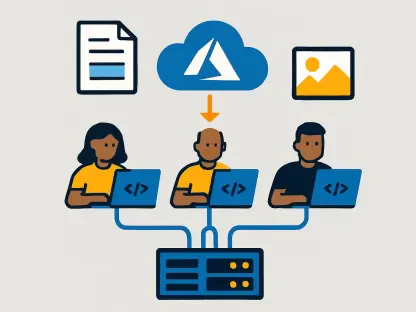In an era where efficiency and adaptability are pivotal to government operations, agentic automation emerges as a transformative approach in the public sector. This cutting-edge methodology combines robotic process automation (RPA) with agentic artificial intelligence (AI) to streamline workflows and enhance outcomes. Unlike traditional automation that relies solely on RPA for fixed, rule-based tasks, agentic automation introduces flexibility and intelligence, allowing public agencies to handle complex and unstructured challenges. By combining RPA’s strengths in compliance and resilience with AI’s ability to adapt and learn, agentic automation presents an opportunity to drive significant improvements in public service efficiency. This article explores its implementation, unique benefits, and implications for government operations and citizen interactions.
Evolution of Public Sector Automation
Public institutions have long sought ways to modernize their operations, striving for efficiency and effectiveness through automation. Initially, the adoption of RPA served as a game-changer by automating repetitive, rule-based tasks, thereby freeing human resources for more strategic work. However, traditional RPA systems have limitations when faced with tasks requiring decision-making, intuition, or adaptation to new data. Herein lies the role of agentic AI. Unlike its predecessors, agentic AI embeds advanced machine learning and reasoning capabilities into automation processes, enabling systems to autonomously make decisions and adapt to nuanced scenarios. This evolution marks a shift from static to dynamic automation, equipping public agencies to tackle a broader array of functions while maintaining high standards of efficiency and precision.
The symbiotic relationship between RPA and agentic AI represents a paradigm shift in public sector automation. These technologies, rather than operating in isolation, work collaboratively within a unified system. RPA handles straightforward, predictable tasks, while agentic AI engages with complex issues requiring analysis and discernment. Doing so allows public agencies to implement end-to-end automation solutions, effectively bridging the gap between structured and unstructured workflows. For instance, while RPA can manage routine data entry and form processing, AI agents can analyze varied data sources to extract actionable insights and make informed decisions, thereby adding intelligence to automated processes. This collaborative model empowers public institutions to address challenges previously insurmountable with conventional automation techniques.
Security and Governance in Automation
As agentic automation deployment becomes more prevalent, ensuring security, compliance, and robust governance is paramount. Public sector organizations often operate under stringent regulations and security protocols, necessitating an approach that prioritizes data security and transparency. Concerns surrounding software-as-a-service (SaaS) platforms, particularly their ability to uphold government requirements, are significant. In response, companies like UiPath have integrated features such as the Trust Layer into their platforms, ensuring comprehensive governance and oversight. This framework provides a robust foundation for security and compliance, guaranteeing AI systems operate within prescribed legal and ethical boundaries. Such measures help foster confidence in AI-driven decisions and safeguard sensitive data from potential breaches.
Another pivotal aspect of agentic automation is its focus on maintaining a human-in-the-loop in decision-making processes. Despite AI’s advanced capabilities, human oversight remains essential, serving as a check-and-balance to AI-driven conclusions. This human involvement is critical when automation deals with rapidly changing legislative or regulatory environments, where nuances and contextual understanding play larger roles. By blending human expertise with AI’s computational power, public sector agencies can ensure automated systems adhere to legal frameworks while delivering reliable and contextually appropriate outcomes. This approach helps build trust among stakeholders, promoting wider adoption of agentic automation in government operations.
Transformational Potential in Public Services
Agentic automation holds the potential to revolutionize various public sectors by enhancing the quality and delivery of services. In countries like Singapore, where efficiency and innovation are central to government philosophy, agentic automation is poised to make significant contributions. Public agencies could leverage these technologies for tasks such as document processing, which traditionally consume significant resources and time. By automating data analysis and resource allocation, agencies can effectively improve urban planning, optimize healthcare services, and achieve better resource deployment. This advancement allows public institutions to operate with unprecedented agility and responsiveness, critical factors in an ever-evolving societal landscape.
In healthcare, agentic automation could play a transformative role by enabling data-driven decision-making. AI agents equipped with machine learning capabilities can assist in complex processes like drug discovery, patient diagnosis, and treatment planning. By analyzing extensive datasets, including medical scans and patient histories, these automated systems can provide insights that enhance medical outcomes and patient care. This enhanced ability to process and interpret data marks a shift toward proactive and personalized healthcare, improving both efficiency and patient experience. Consequently, agentic automation positions itself as a key driver in bridging current healthcare delivery gaps and addressing future healthcare challenges through intelligent innovation.
Human-AI Collaboration for Future Readiness
Public institutions have been on a continual quest to modernize their processes, aiming for enhanced efficiency through automation. Initially, RPA revolutionized operations by handling repetitive, rule-based tasks, thus liberating human resources to focus on more strategic endeavors. Nevertheless, traditional RPA systems falter when encountering tasks requiring decision-making or adaptation to new information. This is where agentic AI steps in, offering advanced machine learning and reasoning capabilities. Unlike its predecessors, agentic AI enables automation systems to autonomously make decisions and adapt to nuanced scenarios. This transition marks a shift from static to dynamic automation, empowering public agencies to address a wider array of functions with precision. The collaborative nature of RPA and agentic AI signifies a paradigm shift, allowing public institutions to execute end-to-end automation solutions. RPA manages routine tasks like data entry, while agentic AI extracts insights from diverse data sources, enriching automated processes with intelligence.









